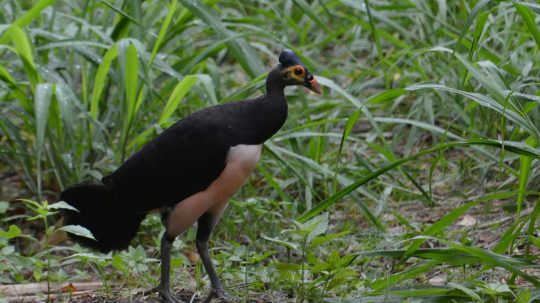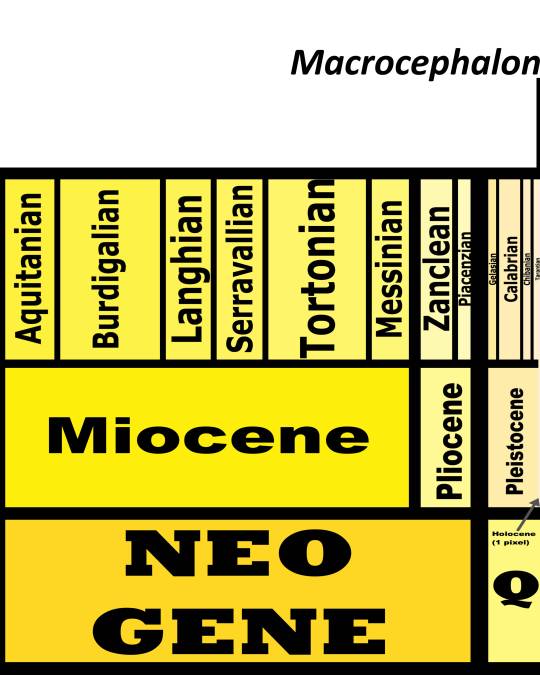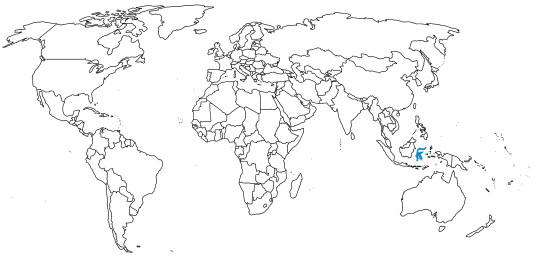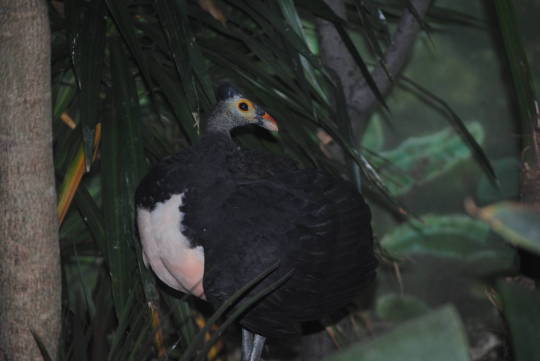#ariefrahman
Explore tagged Tumblr posts
Photo

A maleo on North Sulawesi.
© Ariefrahman / Wikimedia Commons
17 notes
·
View notes
Text

Green-backed Kingfisher (Actenoides monachus), family Alcedinidae, order Coraciiformes, Sulawesi, Indonesia
Photograph by Ariefrahman
145 notes
·
View notes
Video
instagram
Selamat Hari Kerdekaan Indonesia Ku Yang Ke 77 . . . 📷 @hikammis #SesarenganmBangunBlora #khozinatululum #ariefrahman #ganjarpranowo #jokowi #indonesia #santri #santriblora #Blora272 #blora #blorahits #bloramustika #bloraupdate #blorakece #selebgramindonesia #selebgramhits #selebgram #lfl #lfl❤ #potretblora (di Blora, Jawa Tengah, Indonesia) https://www.instagram.com/p/ChTF40Qt35n/?igshid=NGJjMDIxMWI=
#sesarenganmbangunblora#khozinatululum#ariefrahman#ganjarpranowo#jokowi#indonesia#santri#santriblora#blora272#blora#blorahits#bloramustika#bloraupdate#blorakece#selebgramindonesia#selebgramhits#selebgram#lfl#lfl❤#potretblora
0 notes
Text
Macrocephalon maleo

By Ariefrahman, CC BY-SA 4.0
Etymology: Great Head
First Described By: Müller, 1846
Classification: Dinosauromorpha, Dinosauriformes, Dracohors, Dinosauria, Saurischia, Eusaurischia, Theropoda, Neotheropoda, Averostra, Tetanurae, Orionides, Avetheropoda, Coelurosauria, Tyrannoraptora, Maniraptoromorpha, Maniraptoriformes, Maniraptora, Pennaraptora, Paraves, Eumaniraptora, Averaptora, Avialae, Euavialae, Avebrevicauda, Pygostaylia, Ornithothoraces, Euornithes, Ornithuromorpha, Ornithurae, Neornithes, Neognathae, Galloanserae, Pangalliformes, Galliformes, Megapodiidae
Status: Extant, Endangered
Time and Place: Within the last 10,000 years, in the Holocene of the Quaternary


Maleos are known entirely from the island of Sulawesi in Indonesia

Physical Description: Maleos are large landfowl, reaching 55 centimeters in length. These are large, round birds with skinny necks and odd looking heads - they have black crests on the tops of their heads that flop over the back, and little red bands at the top of their beaks. The beaks of Maleos are thick and grey, and they have primarily brown heads. Their backs are black, as are their wings and tails, but their bellies are white; and they have long, grey legs. In addition to all of this, Maleos have orange rings around their eyes that are extremely noticeable. The young tend to have black heads in addition to these features.
Diet: Maleos feed on a variety of fruits, seeds, insects, and other invertebrates.

By Stavenn, CC BY-SA 3.0
Behavior: Maleos are Megapodes, which means they are one of the only groups of dinosaurs that don’t take care of their young! Instead, Megapodes make giant mound-nests which use geothermal energy and solar-heat in order to incubate the eggs. Maleos are monogamous, mating with only one individual per season (and potentially per life, but they aren’t very well studied), and the pair builds the nest mound together, lays the eggs, and leaves. Around ten eggs are laid per year, though some may lay as many as thirty. The eggs incubate for nearly three months; when the young hatch, they rapidly lose a lot of weight, before beginning to chow down on as much food as possible and growing rapidly for the next two months. They reach sexual maturity themselves at around two years of age. They can live for up to 23 years.

By BronxZooFan, CC BY-SA 4.0
These are noisy birds, making a wide variety of calls including brays, rolls, and quacking - to the point of sounding rather surreal in some situations. They tend to spend most of their time foraging with their mate, walking around and gathering the food off of the ground. They do not migrate, but they also do move around the island each year, not sticking in one place or placing their nests in the same sites from year to year.
Ecosystem: These megapodes live primarily in lowland and hill jungle, going to the beaches for their breeding or in forest clearings with extensive amounts of sand. They usually roost in trees high off of the ground. Maleos are preyed upon by humans, pigs, monitor lizards, and crocodilians.

By Ariefrahman, CC BY-SA 4.0
Other: Maleos are endangered, with only potentially 14,000 individuals left with a rapidly declining population. The reasons for this seem to be due to human exploitation, egg hunting by humans and introduced mammalian predators, and extensive habitat loss. This is also illegal, as much of that lost habitat is protected - as are the eggs of this species, which are being collected in the thousands. Since they are a delicacy, and not a food source staple, this practice must be condemned and hopefully further regulation can help to increase Maleo populations.
~ By Meig Dickson
Sources Under the Cut
Elliott, A. & Kirwan, G.M. (2019). Maleo (Macrocephalon maleo). In: del Hoyo, J., Elliott, A., Sargatal, J., Christie, D.A. & de Juana, E. (eds.). Handbook of the Birds of the World Alive. Lynx Edicions, Barcelona.
Foley, James A. (March 9, 2013). "Rare Maleo Eggs Successfully Incubated And Hatched At Bronx Zoo". Nature World News. Nature World News.
#Macrocephalon maleo#Macrocephalon#Maleo#Megapode#Dinosaur#Factfile#Birds#Dinosaurs#Galloanseran#Galliform#Landfowl#Pheasant#Quaternary#Birblr#Australia & Oceania#Omnivore#terrestrial tuesday#biology#a dinosaur a day#a-dinosaur-a-day#dinosaur of the day#dinosaur-of-the-day#science#nature
97 notes
·
View notes
Photo

Jika ada yang memintaku menulis hal-hal yang paling penting dalam hidup, traveling adalah hal pertama yang akan aku masukkan dalam list. Kenapa? Karena bagiku traveling bukan hanya sekedar jalan-jalan kemudian pulang. Bagiku traveling adalah sebuah perjalanan yang mampu membuatku merasa lebih hidup karena bisa langsung bersentuhan dengan alam. Menurutku setiap perjalanan akan mempunyai ceritanya sendiri. Pergi ke tempat yang sama di waktu yang berbeda akan menghasilkan cerita yang berbeda pula. Karena itu, di setiap perjalanan aku selalu berusaha mengabadikan momen-momen tersebut dalam bentuk foto. Di setiap foto yang aku ambil, tersembunyi ratusan sampai ribuan kata tentang perjalanan yg aku lakukan. Karena itu, bagiku traveling dan fotografi adalah dua hal yang tidak dapat dipisahkan. Perjalanan dengan cerita-ceritanya akan tersimpan baik dalam sebuah foto yang tertangkap lensa. 📸 Credit: - @ariefrahman.98 #earthbie . Follow 🌍 @earthbie 📸 for more daily content 🏊♂️🏊♀️ Tag someone you’d love to visit this place with 😍 . . . . . #love #instagood #me #tbt #cute #nature #instagram #photooftheday #beautiful #me #selfie #picoftheday #friends #fashion #mountains #earth #travel #instatravel #trip #EarthBie https://ift.tt/346oNr3
0 notes
Photo

Ado nan alun pernah kamari Uda/Uni? Pict from @ardiesensei - Setiap perjalanan itu punya cerita masing-masing dan jadikanlah ceritamu indah bagi orang lain, jangan kotori dengan hal yang dirasa tak penting karena sebuah perjalanan itu Mahal ....... . . . . Inframe: @ariefrahman.98 Loc: Bukit Batu Manda jorong Belubus kec. Guguak kab. Limo Puluah Kota - Sumatera Barat - #SudutPayakumbuh
0 notes
Photo

Bagaimana jika aku memberimu dua pilihan saja? Melupakanku segera atau kau akan terus terluka?? Percayalah, aku bukan lagi orang yang sama, yang pernah membuatmu begitu dalam terjatuh karena cinta. -al- #bebaspergi . . 📷@ariefrahman.98 📍Puncak Gagoan, Solok, Sumatera Barat - Indonesia . . . "Let's journey and tell your story" (di Puncak Gagon Solok)
0 notes
Text

Green-backed Kingfisher (Actenoides monachus), male, family Alcedinidae, Sulawesi, Indonesia
photograph by Ariefrahman
141 notes
·
View notes
Text
Actenoides

Spotted Kingfisher by “Doing Big Year”, CC BY 2.0
Etymology: Resembling Brightness
First Described By: Bonaparte, 1850
Classification: Dinosauromorpha, Dinosauriformes, Dracohors, Dinosauria, Saurischia, Eusaurischia, Theropoda, Neotheropoda, Averostra, Tetanurae, Orionides, Avetheropoda, Coelurosauria, Tyrannoraptora, Maniraptoromorpha, Maniraptoriformes, Maniraptora, Pennaraptora, Paraves, Eumaniraptora, Averaptora, Avialae, Euavialae, Avebrevicauda, Pygostaylia, Ornithothoraces, Euornithes, Ornithuromorpha, Ornithurae, Neornithes, Neognathae, Neoaves, Inopinaves, Telluraves, Afroaves, Coraciimorphae, Cavitaves, Eucavitaves, Picocoraciae, Picodynastornithes, Coraciiformes, Alcedini, Alcedinidae, Halcyoninae
Referred Species: A. monachus (Blue-Headed or Green-Backed Kingfisher), A. capucinus (Black-Headed Kingfisher; may be a subspecies of the Blue-Headed Kingfisher), A. princeps (Scaly-Breasted Kingfisher), A. regalis (Plain-Backed Kingfisher; may be a subspecies of the Scaly-Breasted Kingfisher), A. bougainvillei (Bougainville Moustached Kingfisher or Moustached Kingfisher), A. excelsus (Guadalcanal Moustached Kingfisher; may be a subspecies of the Moustached Kingfisher), A. lindsayi (Spotted Kingfisher or Spotted Wood Kingfisher), A. hombroni (Blue-Capped Kingfisher or Hombron’s Kingfisher), A. concretus (Rufous-Collared Kingfisher)
Status: Extant, Endangered - Least concern
Time and Place: Within the last 10,000 years, in the Holocene of the Quaternary


Actenoides lives in a variety of places in Southeast Asia and Oceania, especially on specific Indonesian islands, as well as the Philippines, the Solomon Islands, Malaysia, and Thailand

Physical Description: Actenoides is a genus of Kingfisher, a group of tree-dwelling birds with an extremely distinctive body plan. Kingfishers have squat bodies and huge heads, with even larger beaks - their long, triangular beaks allow them to eat a wide variety of food items, including, of course, fish, but also insects and small animals. Actenoides is no exception to this unique, distinctive body plan. They are heavy-looking kingfishers, with squat bodies and bright, varied coloration. Most species in this genus have brightly colored heads for display and species recognition, and more dull colored bodies; though they aren’t dull to look at, with spotting and stripes and all other distinctive patterning. Some species in the genus break this pattern, and have brightly colored wings and tails instead. This species ranges from 23 to 32 centimeters in length, making it range from the length of an American Robin to the length of a Common Rock Pigeon.
Diet: Actenoides, despite being a Kingfisher, actually mainly eats land-based animals, especially insects, large centipedes, and small lizards and frogs. Some species will occasionally feed on fish, but it’s rare.

Rufous-Collared Kingfisher by Francesco Veronesi, CC BY-SA 2.0
Behavior: These birds are arboreal, browsing amongst trees for sources of food. They’re a loud group of birds, making barking, loud calls to one another - most species make a “ko, ko, ko” call; others, a warbling pitched whistle; and still others, a ki-ki-ki-ki call instead. These noisy birds fill up their environments with their calls. They breed mainly from February through May, though some species breed earlier or later depending on their habitat. They then go on to excavate nest-burrows - some species in the ground, others in trees. Typically they lay between two and four eggs per clutch, and are very secretive in guarding their eggs - making it rather difficult to know much more about their nesting behavior. However, at least one species has a nestling period after hatching of three weeks. These birds do not migrate, but instead remain in the habitat of their birth for their whole lives.
Ecosystem: All species in this genus live in forested environments, especially mountain and swamp forest; the specific kind of forest depends on the species, with some preferring old-growth forest and others close-canopy forest. Rainforests are also a common habitat lived in by this genus, as well as evergreen forest.
Other: Most species in this genus are threatened with extinction in some capacity, mostly due to having restricted ranges and, thus, easily susceptible to habitat destruction. Some species have less than 1000 individuals left in their populations, but conservation efforts are ongoing. For isolated island species, the introduction of mammal predators such as house cats have played a huge toll on their populations.
In addition, the taxonomy of this group is a mess; without more knowledge of species differences, it’s difficult to say, but there are at least a few populations that might be their own species, or might be subspecies instead. More research on this elusive breed of Kingfishers is needed to better understand their differences.

Blue-Headed Kingfisher by Ariefrahman, CC BY-SA 3.0
Species Differences:
For the purposes of this guide, I will be treating each grouping as a separate species.
The Blue-Headed Kingfisher, also known as the Green-Backed Kingfisher, is found in Sulawesi. The males and females are roughly identical in their bodies - they have dark reddish-orange chests and bellies and dark blue-green backs and wings, with a brighter green tail. The males, however, have entirely blue heads, while the females have that same dark reddish-orange as patches over the eye and cheek.
The Bougainville Moustached Kingfisher, or just Moustached Kingfisher, hails mainly from the Northern Solomon islands. It is primarily yellow in color, with bright blue wings and tail. It also has a blue stripe across its chin, leading to its name, and a bright blue stripe going back form its eyes. The females differ from the males in being smaller, and having green feathers on their back instead of blue, but they still have blue wings and tails.
The Blue-Capped Kingfisher, or Hombron’s Kingfisher, lives primarily in the Southeastern islands of the Philippines. The males are cerulean blue, with little yellow specks on their wings and back and yellow bellies. They have bright blue caps and a little stripe on their chin, also colored blue. The females are smaller and have teal heads, with olive green backs and spots, though there is some aqua blue under the wings on the back. Their tails are also olive green.

Scaly-Breasted Kingfisher by A. S. Kono, CC BY-SA 3.0
The Scaly-Breasted Kingfisher lives mainly in Sulawesi. They have black and white chests, with the black forming wavy stripes across the belly and chest - hence the name. They have brown backs and tails with lighter brown spots in rows across the back. Their heads are a dark blue, while the females have yellow stripes above and below the eyes.
The Rufous-Collared Kingfisher lives mainly in southeast Asia and parts of Indonesia. Both males and females have reddish-orange chests and green tops to their heads, as wells as black stripes over their eyes and blue stripes across their cheeks. The males are bright blue on the back, while the females are olive green, with little yellow spots going across the back. The females have slightly longer tails than the males.
The Guadalcanal Moustached Kingfisher is similar to the Moustached Kingfisher, but its moustache and eye stripes are black, rather than blue. Their backs are also black, and their wings are dark indigo, while their tails are bright blue. They live in the Southern Solomon Islands.

Moustached Kingfisher by J. G. Keulemans, in the Public Domain
The Spotted Kingfisher, or Spotted Wood Kingfisher, is mainly from the Philippines. These are highly patterned birds, with rows of spots all over their bodies. They have dark olive wings, backs, and tails; with yellow spots in rows over their wings and backs. They have white bellies with that same dark green as spots in rows down their chests and bellies. THe head of the male has a reddish-orange base, with a blue stripe across the chin; and then a black stripe, a light blue stripe, and a green stripe on the top of the head. There are faint yellow stripes all over their heads. The females have alternating green, lime, and black stripes instead, with similar yellow spots. One subspecies has alternating blue and black stripes instead, with no yellow spots.
The Plain-Backed Kingfisher lives in Sulawesi, primarily in the southeastern regions. They have yellowish chests and bellies, and a band of that yellow coloring around the neck. They have brown backs, wings, and tails, with yellow stripes across the wings. They have yellow and black stripes on their cheeks and across the eye, and dark cerulean tops of their heads. These birds do not differ based on sex.
Finally, the Black-Headed Kingfisher is known from Sulawesi, from nearly the entire range of the island. They have olive green wings, backs, and tails; and orange chests and bellies. The males have entirely black heads, while the females have black backs and tops of their heads and a black stripe across their eyes, with dark orange cheeks and foreheads. In fact, this gives the females an appearance like spectacled humans with Elvis-like hair.
~ By Meig Dickson
Sources under the cut
del Hoyo, J., Collar, N. & Kirwan, G.M. 2019. Black-headed Kingfisher (Actenoides capucinus). In: del Hoyo, J., Elliott, A., Sargatal, J., Christie, D.A. & de Juana, E. (eds.). Handbook of the Birds of the World Alive. Lynx Edicions, Barcelona.
del Hoyo, J., Collar, N., Kirwan, G.M. & Sharpe, C.J. 2019. Guadalcanal Moustached Kingfisher (Actenoides excelsus). In: del Hoyo, J., Elliott, A., Sargatal, J., Christie, D.A. & de Juana, E. (eds.). Handbook of the Birds of the World Alive. Lynx Edicions, Barcelona.
del Hoyo, J., Collar, N. & Kirwan, G.M. 2019. Plain-backed Kingfisher (Actenoides regalis). In: del Hoyo, J., Elliott, A., Sargatal, J., Christie, D.A. & de Juana, E. (eds.). Handbook of the Birds of the World Alive. Lynx Edicions, Barcelona.
Jobling, J. A. 2010. The Helm Dictionary of Scientific Bird Names. Christopher Helm Publishing, A&C Black Publishers Ltd, London.
Woodall, P.F. & Sharpe, C.J. 2019. Blue-capped Kingfisher (Actenoides hombroni). In: del Hoyo, J., Elliott, A., Sargatal, J., Christie, D.A. & de Juana, E. (eds.). Handbook of the Birds of the World Alive. Lynx Edicions, Barcelona.
Woodall, P.F. & Kirwan, G.M. 2019. Blue-headed Kingfisher (Actenoides monachus). In: del Hoyo, J., Elliott, A., Sargatal, J., Christie, D.A. & de Juana, E. (eds.). Handbook of the Birds of the World Alive. Lynx Edicions, Barcelona.
Woodall, P.F. & Kirwan, G.M. 2019. Bougainville Moustached Kingfisher (Actenoides bougainvillei). In: del Hoyo, J., Elliott, A., Sargatal, J., Christie, D.A. & de Juana, E. (eds.). Handbook of the Birds of the World Alive. Lynx Edicions, Barcelona.
Woodall, P.F. 2019. Rufous-collared Kingfisher (Actenoides concretus). In: del Hoyo, J., Elliott, A., Sargatal, J., Christie, D.A. & de Juana, E. (eds.). Handbook of the Birds of the World Alive. Lynx Edicions, Barcelona.
Woodall, P.F. & Kirwan, G.M. 2019. Scaly-breasted Kingfisher (Actenoides princeps). In: del Hoyo, J., Elliott, A., Sargatal, J., Christie, D.A. & de Juana, E. (eds.). Handbook of the Birds of the World Alive. Lynx Edicions, Barcelona.
Woodall, P.F. 2019. Spotted Kingfisher (Actenoides lindsayi). In: del Hoyo, J., Elliott, A., Sargatal, J., Christie, D.A. & de Juana, E. (eds.). Handbook of the Birds of the World Alive. Lynx Edicions, Barcelona.
#actenoides#bird#dinosaur#kingfisher#birblr#afroavian#coraciiform#flying friday#carnivore#australia and oceania#eurasia#quaternary#actenoides bougainvillei#actenoides capucinus#actenoides concretus#actenoides excelsus#actenoides hombroni#actenoides lindsayi#actenoides monachus#actenoides princeps#actenoides regalis#factfile#birds#dinosaurs#black-headed kingfisher#blue-capped kingfisher#blue-headed kingfisher#bougainville moustached kingfisher#green-backed kingfisher#guadacanal moustached kingfisher
184 notes
·
View notes
Text
Rhamphococcyx calyorhynchus

By Ariefrahman, CC BY-SA 3.0
Etymology: Cuckoo Bill
First Described By: Cabanis & Heine, 1863
Classification: Dinosauromorpha, Dinosauriformes, Dracohors, Dinosauria, Saurischia, Eusaurischia, Theropoda, Neotheropoda, Averostra, Tetanurae, Orionides, Avetheropoda, Coelurosauria, Tyrannoraptora, Maniraptoromorpha, Maniraptoriformes, Maniraptora, Pennaraptora, Paraves, Eumaniraptora, Averaptora, Avialae, Euavialae, Avebrevicauda, Pygostaylia, Ornithothoraces, Euornithes, Ornithuromorpha, Ornithurae, Neornithes, Neognathae, Neoaves, Columbaves, Otidimorphae, Cuculiformes, Cuculidae, Phaenicophaeinae
Status: Extant, Least Concern
Time and Place: Within the last 10,000 years; in the Holocene epoch of the Quaternary period


Rhamphococcyx is from the Indonesian island of Sulawesi

Physical Description: Rhamphococcyx, the Yellow-Billed Malkoha, is a unique species of Cuckoo, about 53 centimeters long. They have brick-red heads and necks and black bodies, with dark purple wings and tails. They also have bright yellow upper beaks and red lower beaks! Their tails are extremely long, while their bodies are more squat. They have long, triangular beaks, and black patches over their eyes. Like other cuckoos, it’s a relatively slender, tree-dwelling bird; with zygodactylus feet - using two toes forward and two toes backward to hold onto branches. It has soft feathers that aren’t really waterproof, and thus it is very sensitive to rain.
Diet: The Yellow-Billed Malkoha feeds mainly on insects such as caterpillars, locusts, mantids, and beetles. It’ll move around the tree canopy much like a squirrel to catch insects, especially those flushed out by macaque monkeys.
Behavior: The Yellow-Billed Malkoha is a solitary bird that only really associates with others of its kind during the breeding season. It is mainly awake during the day and is quite shy, usually only heard rather than seen. It makes a short, rattling call. It breeds from November to December, and though most cuckoos are nest parasites - laying their eggs in the nests of other birds - it doesn’t seem to be one itself, and may even make its own nests. Clutch size is unknown, as is breeding behavior. It does not migrate.
Ecosystem: The Yellow-Billed Malkoha is only known from the secondary growth rainforests and forest edges of Sulawesi, and will often be found on coconut plantations, river vegetations, and near villages.
Other: The Yellow-Billed Malkoha may actually be a species in the genus Phaenicophaeus, rather than in its own genus. Taxonomic discussions are ongoing.
~ By Meig Dickson
Sources under the cut
Jobling, J. A. 2010. The Helm Dictionary of Scientific Bird Names. Christopher Helm Publishing, A&C Black Publishers Ltd, London.
Payne, R. (2019). Yellow-billed Malkoha (Rhamphococcyx calyorhynchus). In: del Hoyo, J., Elliott, A., Sargatal, J., Christie, D.A. & de Juana, E. (eds.). Handbook of the Birds of the World Alive. Lynx Edicions, Barcelona.
#Rhamphococcyx calyorhynchus#rhamphococcyx#yellow-billed malkoha#cuckoo#dinosaur#bird#birblr#columbavian#quaternary#australia and oceania#insectivore#flying friday#dinosaurs#birds#biology#a dinosaur a day#a-dinosaur-a-day#dinosaur of the day#dinosaur-of-the-day#science#nature#factfile
156 notes
·
View notes
Photo

with angga and ariefrahman at Jatiluhur Convention & Resort Hotel – View on Path.
0 notes
Text
Watching Despicable Me 3
with ariefrahman at CGV Cinemas – View on Path.
0 notes
Text
Watching Spider-Man: Homecoming
with ariefrahman at The Premiere Resinda Park Mall – View on Path.
0 notes


